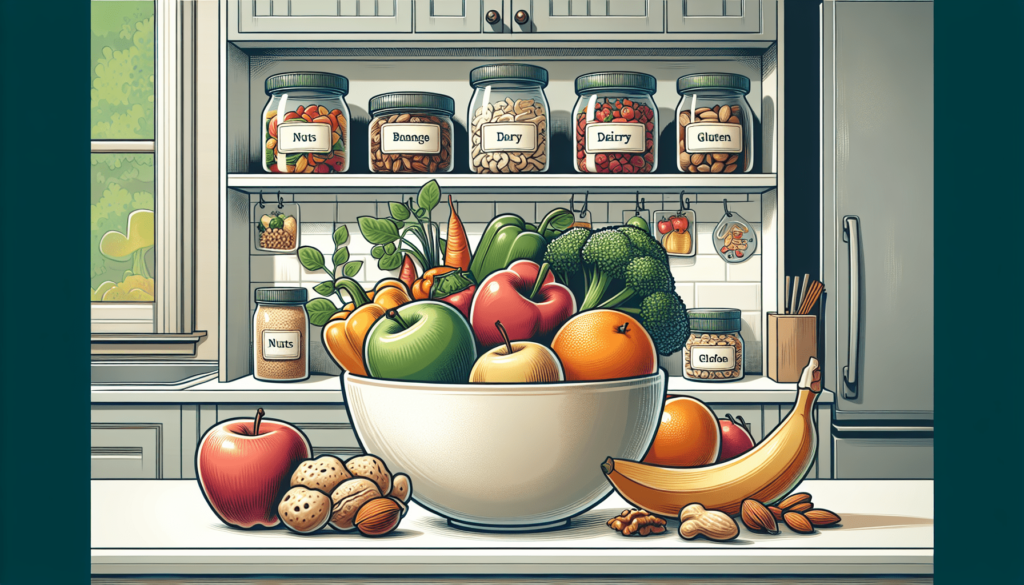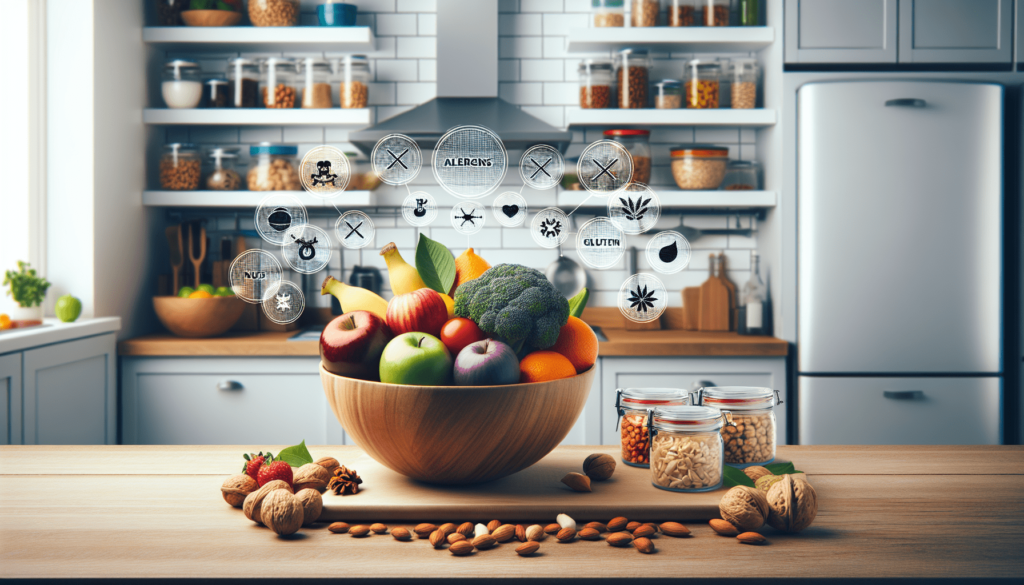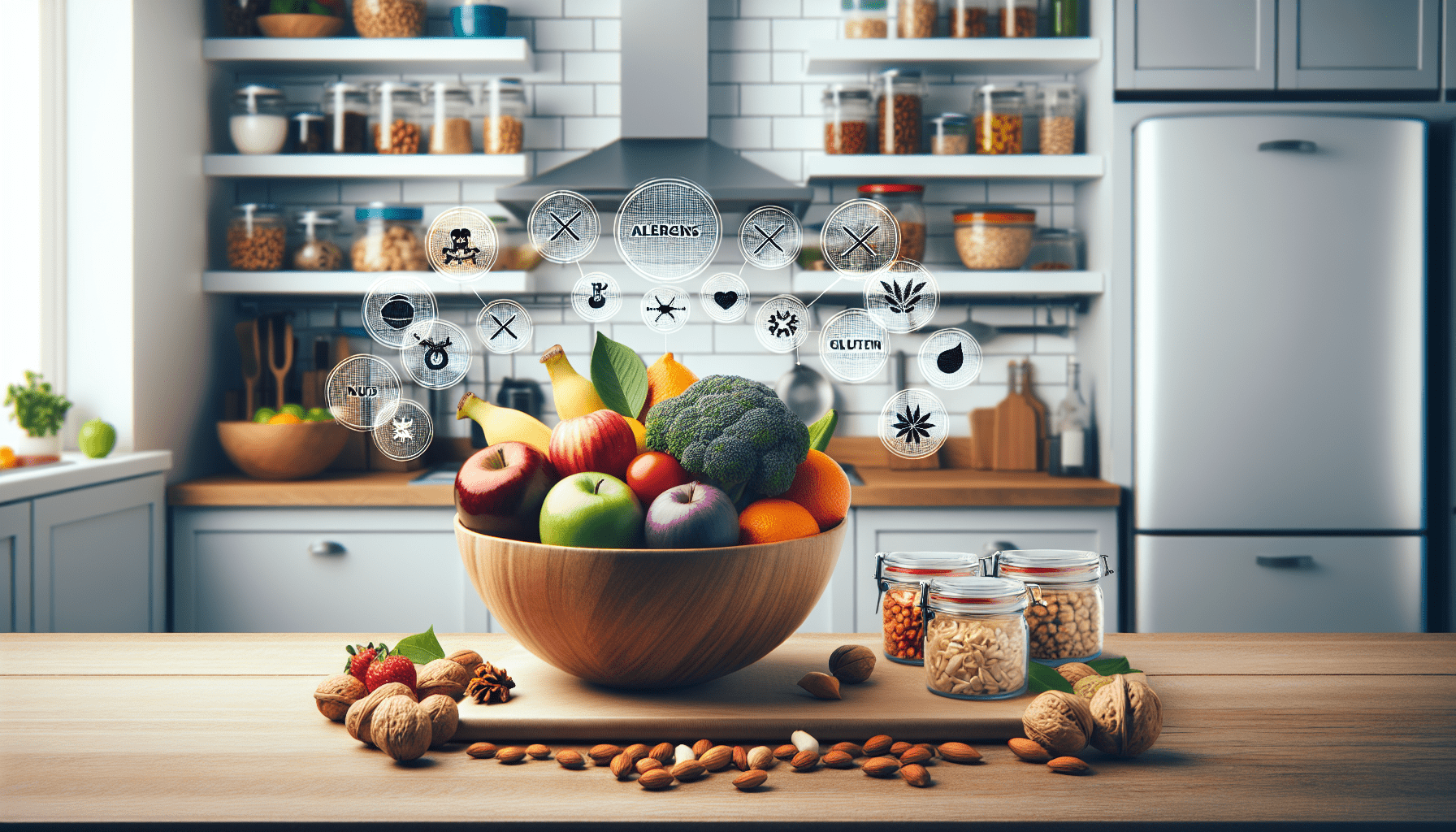Welcome to your ultimate “Guide to Food Allergy-Friendly Recipes and Meal Planning”! This one-stop resource is designed to simplify life for you and your loved ones by offering mouthwatering recipes that cater to various food allergies. Whether you’re dealing with gluten, dairy, nut, or other common allergens, this guide will empower you with creative meal ideas and planning strategies to keep your meals delicious and safe. Dive in and discover how to navigate the world of food allergies with confidence and ease. Have you ever felt overwhelmed by the thought of planning meals that cater to food allergies in your household? You’re not alone! Navigating food allergies can be challenging, but it’s entirely manageable with the right knowledge and tools. Whether you’re dealing with common allergies like nuts, dairy, and gluten, or more specific ones, this guide will provide you with essential tips, delicious recipes, and strategic meal planning advice to make your life easier.
Understanding Food Allergies
First and foremost, it’s crucial to understand what food allergies are and how they can impact you or your loved ones. A food allergy occurs when your immune system mistakenly identifies a harmless food protein as a threat and overreacts to it.
Common Food Allergens
The most common food allergens, often referred to as the “Big 8,” are responsible for the majority of allergic reactions. These include:
| Allergen | Examples |
|---|---|
| Dairy | Milk, cheese, yogurt |
| Eggs | Whole eggs, egg whites |
| Peanuts | Peanut butter, peanut oil |
| Tree Nuts | Almonds, walnuts, pecans |
| Fish | Salmon, tuna, trout |
| Shellfish | Shrimp, crab, lobster |
| Soy | Soybeans, tofu, soy milk |
| Wheat | Bread, pasta, cereal |
Symptoms of Food Allergies
Food allergy symptoms can range from mild to severe and may include:
- Hives or skin rash
- Swelling of the lips, face, or throat
- Wheezing or trouble breathing
- Abdominal pain, nausea, or vomiting
- Anaphylaxis, a life-threatening reaction requiring immediate medical attention
Knowing the common allergens and their symptoms is the first step in managing food allergies effectively.
Strategies for Allergy-Friendly Meal Planning
Planning meals that avoid allergens doesn’t have to be stressful. Here are some strategies to make the process smoother:
1. Identify Safe Foods
Make a list of foods that are safe for you or your family member to eat. This might involve reading labels carefully, as allergens can be hidden in unexpected places. You can also consult with a nutritionist or allergist for tailored advice.
2. Create a Weekly Meal Plan
Prepare a meal plan for the week that incorporates a variety of safe foods. This will help you stay organized and ensure that you’re providing balanced and nutritious meals.
3. Batch Cooking and Freezing
Cooking in bulk and freezing meals can save you time and reduce stress. It’s especially helpful during busy weekdays when you need quick and safe meal options.
4. Meal Prep Essentials
Keep your kitchen stocked with allergy-friendly staples. This way, you’ll always have the ingredients you need on hand, which can prevent last-minute scrambles.

Allergy-Friendly Recipe Ideas
To help you get started, here are a few easy and delicious recipes tailored to common food allergies.
Dairy-Free Banana Smoothie
A dairy-free smoothie that’s packed with nutritious fruits and perfect for breakfast or a snack.
Ingredients:
- 2 ripe bananas
- 1 cup almond milk (or any other safe plant-based milk)
- 1 tablespoon honey (optional)
- 1/2 teaspoon ground cinnamon
Instructions:
- Blend all ingredients together until smooth.
- Pour into a glass and enjoy!
Gluten-Free Chicken Stir-Fry
A simple, gluten-free dish that’s loaded with vegetables and protein.
Ingredients:
- 2 chicken breasts, sliced into thin strips
- 1 red bell pepper, sliced
- 1 yellow bell pepper, sliced
- 1 cup broccoli florets
- 1/4 cup gluten-free soy sauce
- 2 tablespoons olive oil
- 1 teaspoon minced garlic
- 1 teaspoon minced ginger
Instructions:
- In a large pan, heat olive oil over medium-high heat.
- Add chicken strips and cook until fully cooked, about 5-7 minutes.
- Remove chicken and set aside. In the same pan, add garlic and ginger and sauté for 1 minute.
- Add bell peppers and broccoli, stirring for another 5 minutes or until vegetables are tender.
- Return chicken to the pan, pour in the soy sauce, and stir well.
- Serve over rice or quinoa.
Nut-Free Granola Bars
Perfect for a quick snack or breakfast on the go, these nut-free granola bars are both healthy and delicious.
Ingredients:
- 2 cups rolled oats
- 1/2 cup sunflower seed butter
- 1/3 cup honey
- 1/4 cup dried cranberries
- 1/4 cup pumpkin seeds
- 1/2 teaspoon vanilla extract
Instructions:
- Preheat your oven to 350°F (175°C) and line a baking dish with parchment paper.
- In a large bowl, mix all ingredients until well combined.
- Press the mixture into the baking dish and bake for 20-25 minutes, or until golden brown.
- Let cool completely before slicing into bars.
Tips for Grocery Shopping
Shopping for allergy-friendly foods requires a bit of extra vigilance, but these tips can make it easier:
1. Read Labels Carefully
Always read ingredient labels, even on products you regularly buy. Manufacturers can change recipes without notice, potentially adding allergens.
2. Look for Allergen-Free Brands
Certain brands specialize in allergen-free foods. Getting to know these brands can significantly simplify your shopping experience.
3. Fresh is Best
Where possible, opt for fresh fruits, vegetables, and meats, which are less likely to contain hidden allergens compared to processed foods.
4. Use an App
There are apps available that can scan product barcodes and tell you if they contain common allergens. Look into options like “ContentChecked” or “Spoon Guru.”

How to Handle Cross-Contamination
Cross-contamination can turn a safe meal into a dangerous one. Here’s how to prevent it:
Separate Cooking Utensils
Use separate utensils for cooking allergen-free meals. Consider labeling or color-coding these to avoid mix-ups.
Clean Surfaces Thoroughly
Always clean surfaces and cooking equipment thoroughly after preparing food that contains allergens.
Be Mindful of Eating Out
When eating out, inform the restaurant staff of any allergies and ask about how they avoid cross-contamination in the kitchen.
Dining Out with Food Allergies
Speaking of eating out, it can be tricky with food allergies, but it’s definitely doable.
Research Ahead
Look up restaurant menus online to see if they offer allergen-free options. Many places now provide detailed allergen information on their websites.
Talk to the Chef
Always inform your server about your allergies and ask to speak with the chef if necessary. Most kitchens are willing to accommodate special dietary needs upon request.
Be Clear and Specific
When discussing your allergies, be clear and specific to avoid any misunderstandings. For example, say “I have a severe gluten allergy,” rather than just “I can’t eat gluten.”
Including Variety in Your Meals
Even with restrictions, you don’t have to eat the same boring meals every day. Here’s how to add variety to your allergen-free diet:
Experiment with New Ingredients
Explore different fruits, vegetables, grains, and proteins that you’ve never tried before. You might discover a new favorite!
Use Spices and Herbs
Spices and herbs are fantastic for adding flavor to your dishes. They can transform a simple meal into a culinary delight without adding any allergens.
Rotate Recipes
Keep a list of your favorite allergy-friendly recipes and rotate through them to keep things interesting. Trying new recipes on the weekends can also introduce variety.
Meal Planning for Special Occasions
Holidays and special occasions can be stressful when dealing with food allergies, but with a bit of planning, you can still enjoy these moments.
Make a Menu
Plan your menu well in advance and ensure that all dishes are allergy-friendly. This will give you time to find and test recipes, so there are no surprises on the big day.
Communicate with Guests
If you’re hosting, let your guests know about the food allergies ahead of time. If you’re a guest, inform your host and offer to bring a dish or two that you know is safe.
Consider Buffet Style
Set up a buffet with clearly labeled allergen-free options. This allows everyone to serve themselves and helps avoid cross-contamination.
Emergency Plans
Even with the best preparation, accidents can happen. Having an emergency plan can help you remain calm and effective in handling allergic reactions.
Keep Medication Handy
Always have antihistamines and any prescribed medication, like an epinephrine auto-injector, accessible. Make sure everyone in the household knows where they are stored.
Educate Your Family
Ensure that family members and caregivers know how to recognize the signs of an allergic reaction and what steps to take immediately, including how to use emergency medications.
Medical Bracelets
Wearing a medical bracelet can provide crucial information to first responders in case of a severe allergic reaction, potentially saving lives.
Conclusion
Living with food allergies can be challenging, but it doesn’t have to limit your enjoyment of delicious food and good company. By educating yourself and those around you about allergens, planning meals carefully, and preparing for emergencies, you can manage food allergies with confidence. This guide aims to be your go-to resource for creating allergy-friendly meals that are both nutritious and enjoyable. Now, go ahead and start exploring these new recipes and meal planning strategies—you’ve got this!
